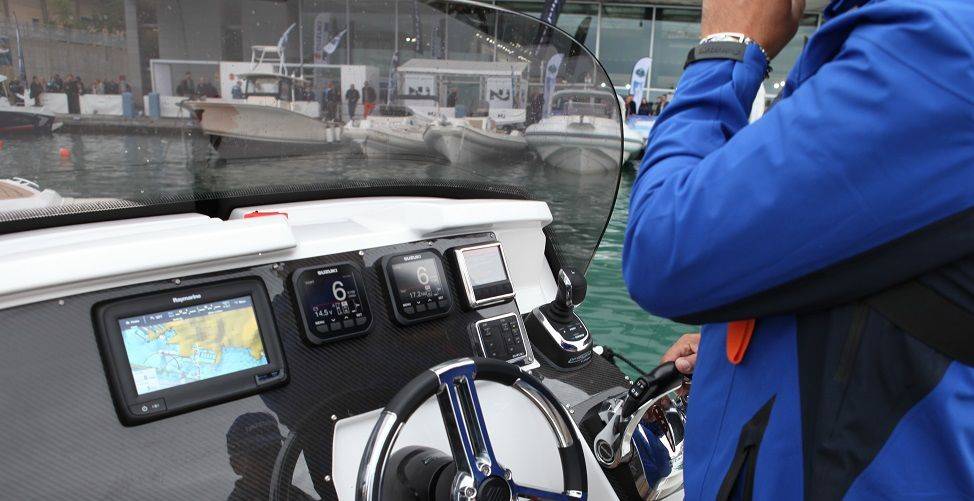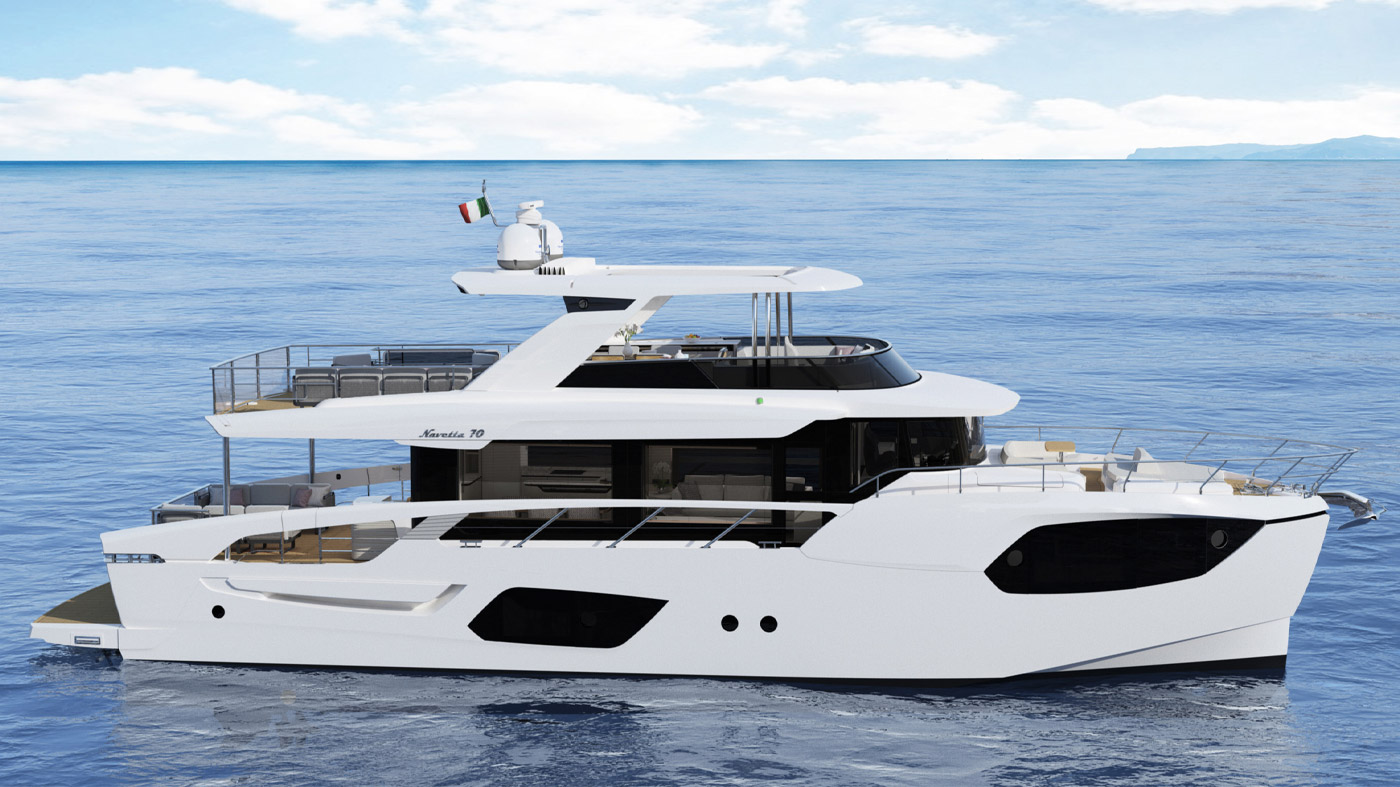di Luca Sordelli
I joystick sono arrivati già da parecchio tempo per le motorizzazioni IPS, entrobordo o EFB, magari accoppiati anche alle eliche di prua, ma sui FB sono ancora abbastanza “giovani”. Dopo Yamaha e Mercury ecco anche arrivare anche Suzuki che ha appena lanciato l’Optimus 360, realizzato con SeaStar Solutions. Lo abbiamo provato a Genova sul nuovissimo Joker 28.
LA TEORIA Tutto ruota attorno alla possibilità di governare i motori con il joystick in maniera autonoma sia nell’erogazione della potenza sia nell’innesto della marcia e, soprattutto, nella gestione dell’angolo di barra. Ci si è risusciti svincolando i motori da un’unica timoneria idraulica, realizzando invece due distinti impianti collegati al joystick attraverso un sistema di comunicazione CAN-bus, che aziona altrettanti attuatori elettroidraulici.
La gestione dei motori è affidata a un processore in grado di calcolare in tempo reale quanta spinta, e in quale direzione, far erogare da ciascun propulsore calibrandone l’azione e facendo fare al battello quello che vuole il pilota.
La gestione elettronica è possibile sui motori Suzuki grazie all’utilizzo della tecnologia drive by wire sugli organi meccanici installati a bordo. Il sistema di governo con un joystick a tre assi anziché essere collegato e muovere il timone o le manette in modo meccanico, grazie a sistemi di connessione con standard CAN-bus, invia i comandi sotto forma di impulsi a un processore presente nel joystick, che, dopo averli elaborati, li trasmette agli organi interessati, azionati attraverso attuatori.
All’elettronica e dunque al joystick è deputata anche l’azione di “trolling”, cioè lo slittamento delle frizioni che adegua la spinta dei motori a quella dell’eventuale thruster. E’ disponibile per le potenze da 15o fino a 300 HP, per doppie o triple installazioni.
Lo abbiamo provato in una giornata impegnativa, ventosa e rafficata. Ci è piaciuta molto la morbidezza nell’innesco, e in questo il joystick di Suzuki batte la concorrenza. Bene anche la risposta ai comandi: non ci sono momenti vuoti troppo fastidiosi, il sistema reagisce. Certo è che bisogna prenderci la mano.
Quando lo abbiamo testato ben ridossati, senza raffiche ad infastidirci, era tutto molto semplice. Una volta capito come funzionava il sistema, il nostro Joker ci ubbidiva come un fedele cagnolino. Ma alle prime raffiche… tutto cambia. E’ un problema comune a tutti i battelli pneumatici che montano il joystick.
La risposta, non è immediata. La prua tende subito ad abbattere, e lo scarroccio, nel complesso, è molto sensibile.
Il gioco si fa duro.
QUINDI? E’ un giocattolo sofisticato ed intrigante. Accoppiato ai due 200 di Suzuki (che si confermano super silenziosi e dall’erogazione piacevolissima) è molto divertente da provare e scoprire. Ma… costa 20.000 Euro (cioè quanto uno dei due propulsori, per il battello ce ne vogliono circa 70.000) e quando ci siamo trovati in difficoltà, alla fine ci siamo riattaccati alle care “vecchie” manette elettroniche.
Tanto ci piacciono i joystick suelle barche più grandi, quanto poco ci convincono sui gommoni con fuoribordo. A prescindere da quale sia il marchio stampato sulle calandre.












